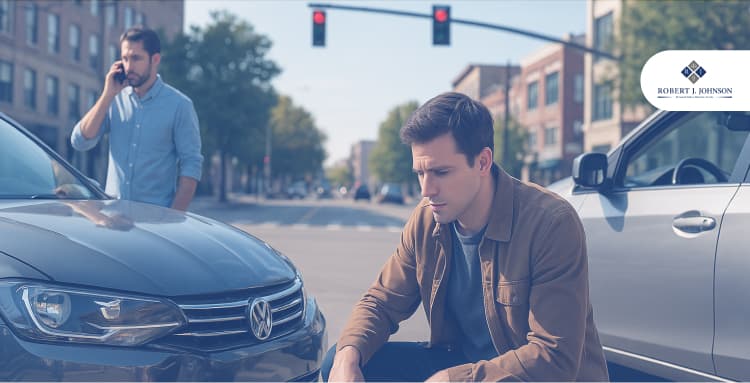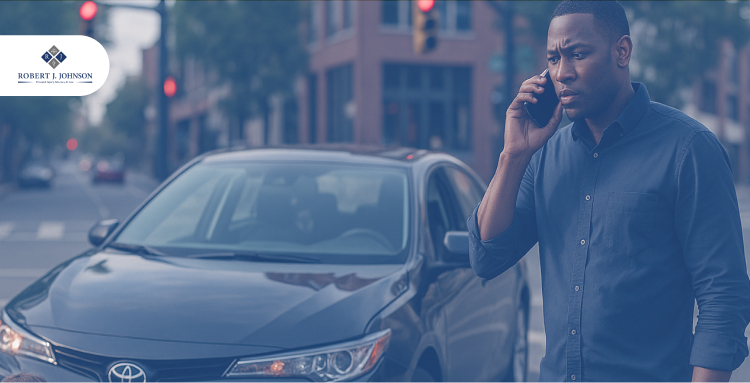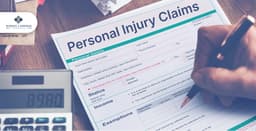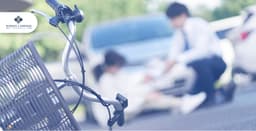
October 7, 2025
What If I’m Hit by a Driver Using a Rideshare App (Uber/Lyft)?
It often starts with an ordinary moment. You could be driving home from work, entering a crosswalk, or waiting at a red light when a rideshare car collides with you unexpectedly. In the aftermath of the shock, questions arise. Who is accountable? Which insurance company will make the payment? Is the driver responsible, or does the ridesharing company step in?
Accidents involving Uber or Lyft drivers are not like regular car accidents. The answer is based on something that most people never consider until it is necessary. It all comes down to the driver's app status at the precise moment of collision. Understanding what that means and knowing what steps to take right away can significantly impact the outcome of your claim.
1. The Three App Periods That Govern Insurance
When you are in an accident with a rideshare driver, one of the first questions that matters is whether the app was on. Insurance coverage changes depending on three distinct periods.
App off, personal errand: If the app is off and the driver is not working, only the driver’s personal auto insurance applies.
App on, waiting for a ride: If the app is on, however, the driver has not accepted a ride yet, the rideshare company provides limited liability coverage. This is usually around $50,000 per person and $100,000 per accident, with an additional $25,000 for property damage.
App on, en route to a passenger or carrying one: Once the driver accepts a ride or has a passenger in the car, the rideshare company’s full commercial coverage applies, often up to $1 million.
Let’s say you were driving home from work and an Uber driver hit your car, the coverage would depend on what they were doing on the app. If the app was off, you would have to rely on their personal insurance.
If the app was on and they were waiting for a ride request, only the limited coverage would be available. However, if they were already on the way to pick up a passenger or had someone in the car, the full $1 million policy could apply to your claim.
2. First Steps At The Scene
Your safety is the first priority. If anyone is injured, call 911 immediately. Even if the injuries appear minor, seek medical attention. Adrenaline (a neurotransmitter hormone) can mask pain, and untreated injuries will worsen over time.
Once everyone is safe, start gathering information. Take photos of the vehicles, their location, license plates, and, if visible, the rideshare logo. Request that the driver show you their license and insurance card.
If there are passengers, inquire about their names and phone numbers. Witnesses are valuable, so take down contact information from anyone who witnessed what occurred.
Contact the police to report the accident. A written report provides evidence later on when insurance companies dispute the facts.
3. Preserving The Digital Trail
The driver’s phone records and the rideshare app’s logs often decide whether Uber or Lyft’s insurance will apply. These digital records track GPS locations, time stamps, and whether the driver had accepted a ride at the exact moment of the crash. Without them, insurance companies may argue that the driver was off duty, which shifts responsibility away from the rideshare policy.
You can request preservation of these records by reporting the accident directly through Uber or Lyft’s support system. In many cases, an attorney can send a formal spoliation letter (also known as a preservation letter).
This is a legal notice requiring the company to secure data before it is deleted. This step matters because digital data may be automatically purged or altered if no action is taken quickly.
Federal rules on electronic discovery, often referred to as e-discovery standards under the Federal Rules of Civil Procedure, recognize the importance of preserving digital evidence.
While Uber and Lyft are not government agencies, they are still bound by these standards once litigation is pending, which means courts can penalize them if evidence is destroyed.
4. Talking To Your Insurer, Rideshare Insurer, And Lawyers

When you notify your own insurer, keep your report brief. State that you were involved in an accident with a rideshare vehicle and are looking for clarification on coverage. Do not speculate about the fault or the app's status.
Your insurer will contact the ridesharing company, however, the words you use can influence how they respond, so keep your message factual.
Ridesharing companies provide online claim forms. Use them to report the accident, however, be cautious not to accept responsibility. Provide basic information and ask the company to confirm whether their insurance policy applies.
5. The Evidence That Impacts Outcomes
When it comes to rideshare accidents, certain documents carry far more weight than someone’s memory of what happened.
Police reports
App logs from Uber or Lyft
GPS records
Vehicle damage photos
Medical records showing injuries close in time to the crash
Preserving this evidence quickly often makes the difference between a strong case and a dismissed claim. If you delay gathering this evidence, insurers may argue that the facts are unclear or that your injuries came from somewhere else.
For instance, if you were hit by a rideshare driver and waited weeks before seeing a doctor, the insurance company could claim your injuries had nothing to do with the accident. By getting medical care right away and keeping the records, you create a clear link that strengthens your claim.
6. Timelines To Expect
Adjusters may make initial contact with you within the first month. They may request statements and medical records. Be cautious because adjusters are not neutral; instead, their goal is to reduce payouts.
Most insurers make a decision about accepting or denying liability within three months. If the request is denied, legal action may be necessary. During this time, medical bills can mount. Having a lawyer means that someone is pushing insurers and arranging for medical providers to wait for payment until the case is settled.
7. Situations That Complicate The Claim

Rideshare accidents do not always follow a simple pattern, and certain circumstances can make determining liability and insurance coverage more complex.
Pedestrian struck by a rideshare driver
If you are walking or biking when struck, the same three app periods decide which insurance applies. The difference is that you may also need to use your health insurance while liability is being sorted out.
Passenger injured during a trip
As a passenger, you are generally covered by the rideshare company’s commercial policy. These cases are usually more straightforward, yet you still need medical documentation and prompt reporting.
Hit-and-run involving a rideshare car
If the driver flees, a police report and any photos or plate numbers are critical. Your uninsured motorist coverage can apply. If the driver is identified, app records will determine which insurer must pay.
Multi-vehicle crashes
When more than two cars are involved, liability may be split. Each insurer may argue that another driver caused most of the damage. Rideshare coverage still depends on app status, yet fault rules in your state decide how compensation is divided.
8. Common Insurer Defenses And How To Rebut Them
When you file a claim after a rideshare accident, you may encounter predictable arguments from insurers. They might claim that the driver’s app was not active, argue that your injuries existed before the crash, suggest that another driver caused the accident, or say that you waited too long to report what happened.
You do collect app logs, photos at the scene, detailed medical records from the start, and witness statements while memories are fresh. Even with all this documentation, insurers can be persistent. That is why having an attorney on your side can help you navigate these defenses effectively and make sure your rights are fully protected.
9. Why Legal Representation Makes A Difference

Rideshare accidents involve multiple insurers, technical app records, and strict deadlines, which can make handling the claim on your own confusing and stressful. With Robert Johnson on your side, you have an experienced attorney who can help you in several key ways:
Request preservation of app data
Negotiate with commercial insurers who often resist full payment
Collect medical and financial records to prove damages
File lawsuits if insurers refuse to settle
Having professional legal support ensures that your claim is managed efficiently and that you have a dedicated advocate working to maximize your compensation, while you focus on your recovery.
Questions We Hear All The Time
Can I sue Uber or Lyft directly?
Not usually at the start. Claims begin with the insurance company covering the driver. In some cases, if coverage applies, Uber or Lyft’s commercial insurer is directly responsible.
What if my own insurer pays first?
Your insurer may cover costs initially and then seek reimbursement from the rideshare insurer. This is called subrogation.
What if I do not report the accident quickly?
Delays can cause evidence to disappear and give insurers reasons to deny coverage. Reporting early is crucial.
Do minor crashes require a lawyer?
If there are no injuries and only property damage, you may handle the claim alone. If medical care is involved or liability is disputed, legal help is valuable.
Closing note from Robert Johnson
When a crash involves Uber or Lyft, the questions of who pays and how much are complicated. You should not have to learn the ins and outs of app logs and insurance coverage while recovering from injuries. At Robert Johnson’s office, we move fast to secure evidence, manage the insurance maze, and fight for the support you need.
Our consultations are free, and our role is to lift the weight from your shoulders. While you focus on healing, we handle the details that turn confusion into clarity.






























































